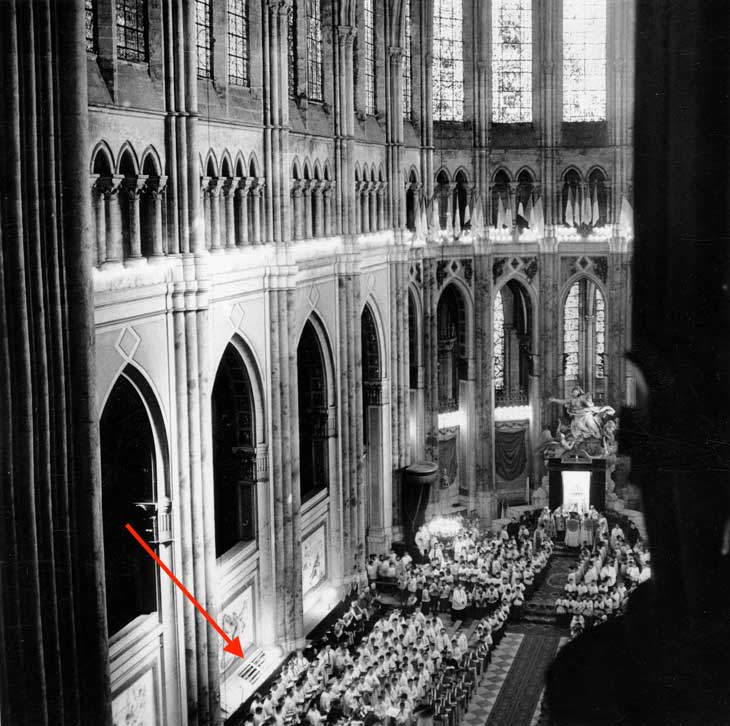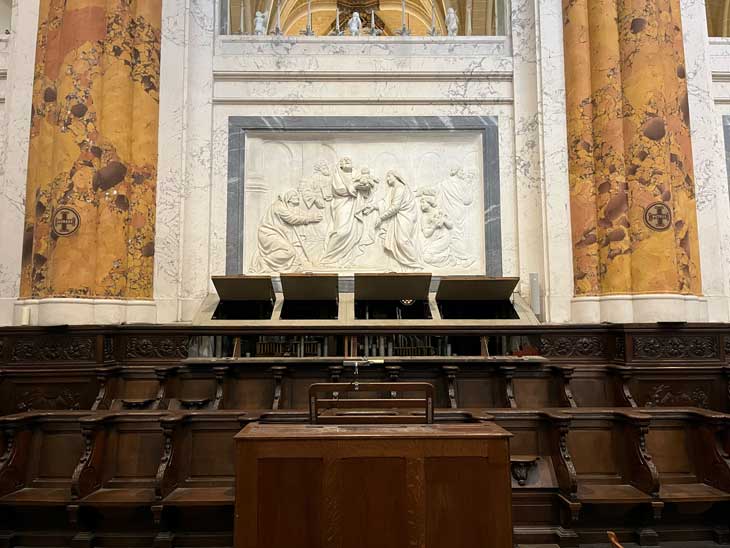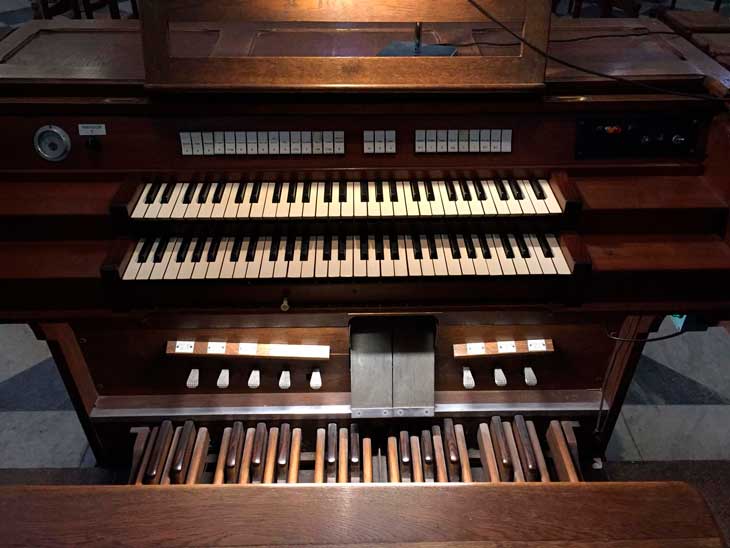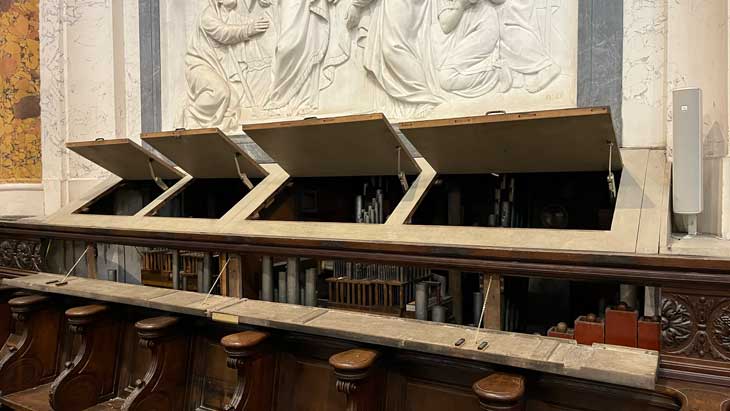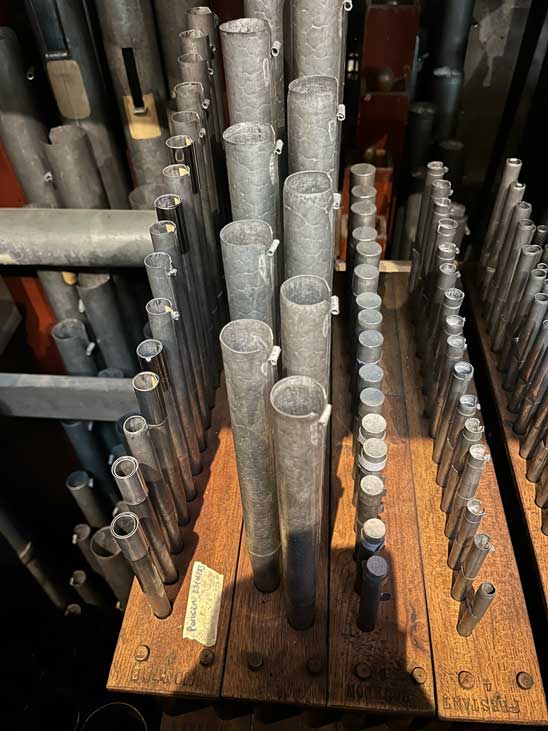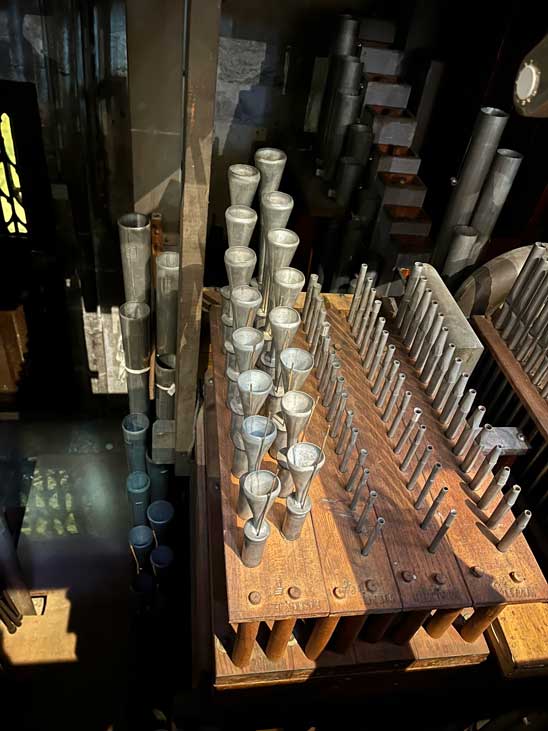As the recent work on the cathedral’s choir organ (undertaken by the Atelier de Facture d’Orgue) was received on Thursday, March 21, 2024, here is an article from February 1857 in the 2nd issue of La Voix de Notre-Dame de Chartres, reporting on its inauguration ceremony.
« A few weeks ago, a most interesting religious solemnity brought together the elite of Chartres society in the Cathedral church (on Tuesday December 25th). The basilica’s vast choir was filled with men; the sanctuary was occupied by seminaries, and the upper stalls by a large number of clergy in choir robes. To the harmonious male sounds of the great organ, played by Mr. Simon, organist of Saint-Denis, Monseigneur, clad in the cope, mitre at the head and crozier in hand, advanced with his assistants towards the middle of the choir. Where was he going?
What was it all about? That’s what everyone wondered, even after reading the program. There was indeed talk of the inauguration of an organ, and all eyes were searching in vain for the instrument. In fact, thanks to a fortunate idea on the part of our worthy prelate, this organ, which was quite considerable, existed in such conditions that it was completely invisible. His Grandeur’s main concern was to preserve the symmetry of the choir, which is surrounded, as we all know, by remarkable marble bas-reliefs, although they are an hors-d’oeuvre and a disparate ornament on the head of our queen of Gothic art. It was in the execution of this difficult work, in the solution of this problem of mechanism, that Mr. Gadault son, a builder with a bright future, showed his true talent. He was able to establish, in the best conditions of sonority, and while preserving for its strongly embouchés stops, the nature of sound which is their own, an organ of ten stops, namely: bourdon 16, trumpet 8, bassoon 8, clarion 4, flute 8, salicional 8, bourdon 8, prestant 4, doublette, oboe top, harmonic flute top; the whole placed in a very small room leaning against the choir stalls.
And so it was to this invisible organ that His Grace stepped forward to bless it. This ceremony completed, His Grandeur returned to his throne, led back to the sound of the new instrument which, under the fingers of the cathedral’s young accompanist organist, Mr. James Nary, found a brilliant and energetic motif in thanks for the blessing it had just received. Upon hearing it for the first time, everyone turned to the marble bas-relief, seeking to penetrate the secret of the vigorous sounds that seemed to emanate from it. A mass with military orchestra, composed by Mr. Miné, our famous former organist, whose memory it was fitting to revive on this occasion, was then performed by the cathedral choir, accompanied by the city’s music, all under the direction of Mr. Maroteau, a distinguished artist, who showed as much zeal as experience and skill on this occasion. Mr. Néermann, first clarinet soloist with the 2nd Grenadiers de la Garde, and Mr. Demarne, baritone, attached to the parish of Saint-Séverin in Paris, came, with a generosity that praises their character as much as the pieces they performed praise their talent, to contribute to this mass, one with his delightful instrument, the other with his magnificent voice. But everyone was waiting impatiently for the moment when the accompanying organ would be heard again: Mr. Simon had been seen descending from the great organ, and a feeling of joy was expressed by approving signs, when the famous improviser was seen moving towards the accompanying organ at the moment of the Offertoire. Indeed, for almost 25 minutes, he delighted the audience with the variety of his melodies and the delicacy of his playing, interweaving the richest harmony with Christmas motifs that pleasantly rested the listeners’ attention. It was then, above all, that the ingenious resources of the organ builder were appreciated in the mechanism of his instrument, which, by means of a few combination pedals, can go from the highest sounds of the reeds to the softest sounds of the flute or drone. The organ, which is completely closed by means of an expression shutter, produces distant effects which Mr. Simon has taken rare advantage of.
But the specialty of an accompaniment organ is to accompany, and the test would not have been complete if this essential part of the reception had been omitted. Thanks to the delicate thoughtfulness of a very distinguished composer, we had the double pleasure of hearing the rich accompaniment and the beautiful composition of an O salutaris made especially for this musical solemnity. Mr. Chollet, whom we had not yet had the honor of knowing, made us wish, with this piece alone, to have in our repertoire from now on the new compositions he will be able to produce. The organ certainly contributed well, as did Mr. Demarne’s religious and strongly accented voice, to the success of this piece; but we must admit, and the organ builder agreed with us, that our instrument found itself a little weak, due to its location, for the accompaniment of the other ensemble pieces: perfect for a single voice, it is difficult for it to support a number of them with its back stops alone; so the reception committee, chaired by Mr. Simon, and consisting of Messrs. Fabriciens and the most competent members of the Chapter, unanimously agreed that the development of sound should be given as much openness as possible, even if this meant sacrificing the jealousy of expression which is, after all, only secondary in an organ for accompaniment, and replacing the harmonic flute with a full stop of three pipes per note, which will thus hold the middle ground between the backs and the reeds, giving bite to the former and vigor to the latter.
This is what Mr. Gadault intends to do so in the near future, happy to be able at this price to gather the approval of all connoisseurs, who have only one voice to recognize the meticulous care given to each part of this ravishing instrument, and the happy composition of the stops and the excellent material of the pipes, and the solidity of the windchests, and the superiority of the mechanism, which after two months of drought or humidity, placed in a recess that gave everything to fear, has not varied for a single moment, nor produced a single serious corning or shaking in the tuning. We are therefore happy to be able to award Mr. Gadault in this report, which we delayed on purpose so that the organ could be sufficiently tested, a well-deserved commendation which will be for him an encouragement and a title to the confidence of churches who would think of entrusting him with the work of instruments of the same kind.” »
Father Vassard,
Honorary Canon, Chapel Master of the Cathedral
To find out more: the cathedral choir organ today.
